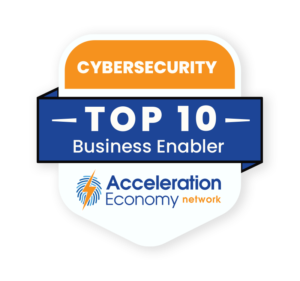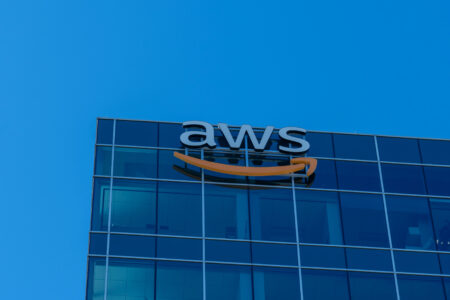As more organizations move to cloud-based infrastructure, many are adopting a multi-cloud architecture, which involves using more than one cloud service provider to host different applications, services, and workloads.
A multi-cloud strategy offers many benefits, including greater flexibility, scalability, and cost efficiency. But before you realize all these benefits, you’ll need a clear migration plan. This plan should include how security will be handled, which includes securing the “in-between” of multi-cloud.
The in-between of multi-cloud refers to the many connections among cloud service providers: connections between public and private clouds, as well as between different public clouds. These connections are vulnerable to a range of security threats, including data breaches, Distributed Denial of Service (DDoS) attacks, and malware infections. In addition, the in-between of multi-cloud can be difficult to secure due to network architecture complexity and the lack of visibility into the cloud service providers’ security controls.
Seven Strategies to Secure Multi-Cloud
To secure the in-between of multi-cloud, organizations need to take a holistic approach that combines technical controls, policies, and best practices. Here are seven CISOs and security leaders can take to secure a multi-cloud architecture:
#1: Use a Secure Connection Model
To ensure secure transfer of data between cloud services providers, organizations should use a secure connection model; options include using virtual private networks (VPNs), private leased lines, or other secure connection methods. In addition, organizations should ensure that all data transmitted over these connections is encrypted using strong algorithms.
Keep in mind that this information will be traveling across multiple cloud providers’ infrastructure as well as over the public internet, so you may need to lean on some old-school secure connection techniques, as well as leveraging cloud-native options from various infrastructure-as-a-service (IaaS) providers.
#2: Apply Strict Access Controls
Access controls are essential to prevent unauthorized access to cloud resources. Organizations should apply strict access controls everywhere, but particularly to their multi-cloud environments, which should include strong authentication mechanisms such as multi-factor authentication (MFA). They should also limit access to resources on a need-to-know basis, using role-based access control (RBAC) or attribute-based access control (ABAC).
#3: Use Cloud-Native Security Tools and Services
Cloud service providers offer a range of security tools and services that can help organizations secure their multi-cloud environments. These include firewalls, intrusion detection and prevention systems, as well as security information and event management (SIEM) tools. These tools and services should be leveraged to enhance security and monitor cloud resources for potential threats.
You’ll want to make sure you pay particular attention to interoperability between the security data formats and the tooling of your various service providers. You do not want to add complexity to your security operations team’s already difficult job by asking them to monitor more tools than necessary.
#4: Monitor and Analyze Network Traffic
Organizations need to monitor and analyze their network traffic to detect and respond to potential security threats. This should include monitoring for unusual patterns of activity, such as spikes in traffic or traffic coming from unfamiliar sources.
Tools such as network traffic analysis (NTA) or SIEM can be used to monitor network traffic and detect potential threats. An attacker can exploit a vulnerability in one cloud service and move laterally to gain a foothold in an otherwise secure environment, making a bad situation much worse. The in-between is essentially a choke point to detect these types of attacks.
#5: Implement a Disaster Recovery Plan
A disaster recovery plan helps maintain business continuity during a security breach or other disaster. The added complexity of multi-cloud makes this even more important. Your business processes will now be intertwined with two or more cloud providers that rely on each other to serve your operational needs. If they cannot communicate with each other, a disaster recovery operation stops.
The organization’s in-between must have a well-defined disaster recovery plan in place that includes backup and recovery procedures, as well as contingency plans for different scenarios. The disaster plan needs to be regularly tested and updated to ensure it remains effective.
#6: Ensure Regulatory Compliance
Organizations, especially those operating in regulated industries, must ensure compliance with relevant regulations and standards. This can include the Health Insurance Portability and Accountability Act (HIPAA), the Payment Card Industry Data Security Standard (PCI DSS), or the General Data Protection Regulation (GDPR). To ensure compliance, organizations should regularly review their security policies and procedures and ensure they comply with relevant regulations and standards.
#7: Conduct Regular Security Assessments
To ensure that their multi-cloud environments remain secure, organizations should conduct regular penetration testing, vulnerability assessments, and security audits. These assessments help identify potential vulnerabilities and gaps in the organization’s security posture and enable the organization to take proactive steps to address them.
Closing Thoughts
Securing the in-between of multi-cloud is not a one-time effort but an ongoing process that requires constant attention and monitoring. Cloud service providers are constantly introducing new services and features, which can introduce unknown security risks.
For example, a few years ago, AWS introduced a service called Lambda@Edge, which allowed developers to run custom code in response to events generated by Amazon CloudFront, a content delivery network service. While this feature offered several benefits, such as improved performance and reduced latency, it also introduced new security risks such as allowing attackers to abuse the service by uploading malicious code that would then be executed by Lambda@Edge. This allowed the underlying infrastructure to be compromised and resulted in the theft of sensitive data. To its credit, AWS quickly introduced security measures to mitigate this vulnerability, but it did exist nonetheless.
Securing the in-between of multi-cloud is a complex and challenging task requiring a holistic approach. Organizations that implement the measures detailed above can mitigate the risks associated with multi-cloud and ensure the ongoing security of their cloud-based infrastructure. By partnering with a trusted cloud security provider, organizations can stay ahead of emerging threats and focus on their core business operations with confidence.
Want more cybersecurity insights? Visit the Cybersecurity channel:









